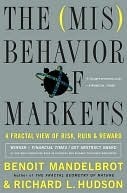Market “Timing” Matters Greatly. Big Gains and Losses Concentrate into Small Packages of Time. Concentration is common. Look at a map of gold deposits around the world: You see clusters of gold veins—in South Africa and Zimbabwe, in the far reaches of Siberia and elsewhere. This is not total chance; millennia of real tectonic forces gradually worked it that way. Understanding concentration is crucial to many businesses, especially insurance. A recent study of tornado damage in Texas, Louisiana, and Mississippi found 90 percent of the claims came from just 5 percent of the insured land area. In
Market “Timing” Matters Greatly. Big Gains and Losses Concentrate into Small Packages of Time. Concentration is common. Look at a map of gold deposits around the world: You see clusters of gold veins—in South Africa and Zimbabwe, in the far reaches of Siberia and elsewhere. This is not total chance; millennia of real tectonic forces gradually worked it that way. Understanding concentration is crucial to many businesses, especially insurance. A recent study of tornado damage in Texas, Louisiana, and Mississippi found 90 percent of the claims came from just 5 percent of the insured land area. In a financial market, volatility is concentrated, too; and it is no mystery why. News events—corporate earnings releases, inflation reports, central bank pronouncements—help drive prices. Orthodox economists often model them as a long series of random events spread out over time. While they can be of varying importance and size, their assumed distribution follows the bell curve so that no single one is preeminent. What sense is this? The terrorist attack on the World Trade Center was, by anyone’s reckoning, far and away the most important event in years for world stability and, consequently, for financial markets. It forced the closure of the New York Stock Exchange for an unprecedented five days, and when trading reopened caused a 7.5 percent fall. It was one titanic event, not the sum of many small ones. Big news causes big market action. And that action concentrates in small slices ...
...more
This highlight has been truncated due to consecutive passage length restrictions.


